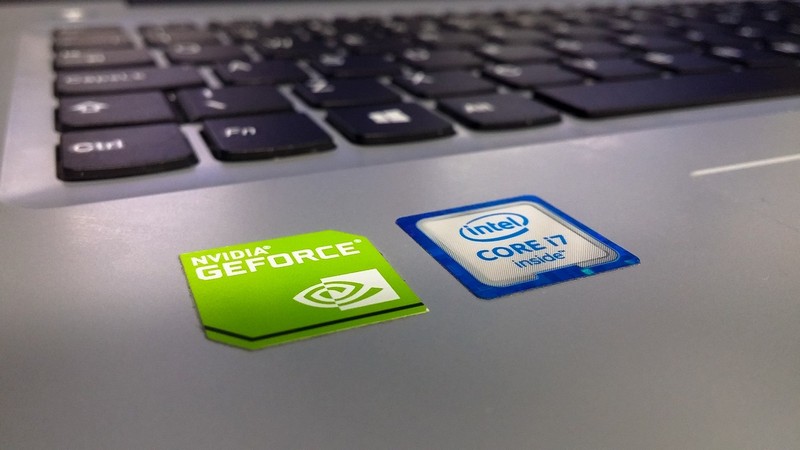
In the realm of e-readers, piEreader emerges as a groundbreaking innovation, offering a free and open-source alternative to traditional devices. Crafted by Guyrandy Jean-Gilles, this DIY e-reader leverages a Raspberry Pi, with plans for expanded hardware compatibility. Supporting various file formats, including EPUB, MOBI, CBZ, and PDF, piEreader embodies flexibility and customization at its core. With the project’s evolution to embrace diverse single-board computers, the vision extends to a future where users can tailor both the physical device and software to suit their preferences fully. As the e-reader landscape witnesses this shift towards openness and adaptability, one wonders: How does piEreader’s open design empower users to personalize their reading experience, what challenges might arise in configuring the project for different hardware platforms, and how could the concept of self-hostable eBook systems revolutionize the way readers access and manage their digital libraries?
Top Stories This Week
- Encrypted Traffic: A Double-Edged Sword for Network Defenders
- China’s Counter-Intuitive Semiconductor Exports Surge Goes Unnoticed
- AI Startup Fibr Raises $1.8 Million in a Funding Round Led by Accel
- Nordic Semiconductor Launches “Green” Component Reels
- Robots Are Helping Build New Apartments in Seattle
- Microsoft Blue Screen Triggers Meme Storm Following Server Outage, Users Celebrate Early
- Transistors on Europa Clipper Can’t Withstand Jupiter’s Radiation, Threatening Mission
- Mediatek Develops Arm-Based Server Chips with TSMC’s 3nm Process
- Self-Driving Sector’s ‘ChatGPT Moment’ To Come Next Year, Horizon Robotics President Says
- A Free and Open E-Reader Using a Single-Board Computer
- Nvidia Promotes Their Open-Source GPU Kernel Driver Support
Hardware Business News
Nordic Semiconductor Launches “Green” Component Reels

Nordic Semiconductor has taken a significant leap towards sustainability by introducing recycled plastic component packaging reels, reducing plastic waste by nearly 15,000 kilograms annually. This eco-friendly initiative aligns with the company’s commitment to minimizing environmental impact while catering to the increasing demand for wireless IoT connectivity semiconductor chips. As the IoT market expands into various sectors like healthcare, smart home, and retail, Nordic’s move towards sustainable packaging sets a commendable example for the industry. How will the adoption of recycled plastic component reels by Nordic Semiconductor influence other semiconductor companies to embrace sustainable practices, what challenges did Nordic face in ensuring the reliability and performance of the recycled plastic reels, and how might this sustainability milestone impact Nordic’s market competitiveness and brand image in the semiconductor industry?
AI Startup Fibr Raises $1.8 Million in a Funding Round Led by Accel

Fibr, an AI-powered personalization platform, has recently secured $1.8 million in funding to enhance its services and expand its market reach. The platform, known for its flagship product Pilot, aims to revolutionize personalized experiences for website visitors. As Fibr gears up for growth and development, key questions arise: How will the infusion of funds impact the evolution of Fibr’s AI personalization platform and the quality of services offered to clients, what strategies will Fibr employ to attract and retain top talent in engineering, product marketing, and sales, and how might Fibr’s expansion into the European market under GDPR compliance influence its competitive positioning and user base growth compared to its current markets in the US, Canada, and India?
China’s Counter-Intuitive Semiconductor Exports Surge Goes Unnoticed

China’s semiconductor exports have been quietly surging, despite the spotlight being on its booming automotive sector. While the automotive exports have seen a record high in the first half of 2024, semiconductor exports from China have been on a steady rise, showcasing the country’s prowess in the tech industry. This unexpected trend raises questions about the global semiconductor market landscape: What factors have contributed to China’s significant increase in semiconductor exports amidst challenges faced by other sectors, how might this surge impact the competitive dynamics among major semiconductor-producing countries, and what implications could this have on the future of the global tech industry and supply chain resilience?
Encrypted Traffic: A Double-Edged Sword for Network Defenders

As organizations increasingly turn to encrypted traffic to safeguard their data, a crucial debate emerges: does the rise of encryption inadvertently provide cover for malicious activities? While encryption undoubtedly bolsters data privacy, it simultaneously poses challenges for security analysts striving to detect and mitigate threats effectively. In a recent discussion on Help Net Security, Peter Manev, Chief Strategy Officer at Stamus Networks, delves into this complex landscape. Manev advocates for finding a middle ground where encrypted traffic can coexist with robust threat detection mechanisms, ensuring security without compromising privacy. How can organizations strike a balance between leveraging encrypted traffic for enhanced data protection and enabling security teams to detect and respond to threats effectively? What innovative approaches can be adopted to identify malicious activities within encrypted traffic without compromising user privacy? And how can the industry collectively address the dual objectives of cybersecurity and data confidentiality in an increasingly encrypted digital environment?
Hardware Engineering News
Transistors on Europa Clipper Can’t Withstand Jupiter’s Radiation, Threatening Mission

NASA’s Europa Clipper mission faces a critical setback as engineers discover that the transistors in the main computer are unable to withstand Jupiter’s intense radiation. With the mission’s launch scheduled for 2024, the need to address this issue promptly is paramount to ensure the success of the mission and its goal of exploring Europa’s potential habitability. As NASA races against time to find solutions, the future of this significant mission hangs in the balance. How will NASA overcome the transistor radiation issue to safeguard the Europa Clipper mission’s success, what innovative strategies are being considered to protect the onboard computer from Jupiter’s radiation, and how might potential delays impact the mission’s scientific objectives and timeline?
Microsoft Blue Screen Triggers Meme Storm Following Server Outage, Users Celebrate Early

The recent Microsoft server outage caused quite a stir among users, highlighting the reliance on digital services in today’s world. As Microsoft scrambled to address the issue impacting access to essential apps and services, social media platforms were flooded with memes and reactions from frustrated users. How did the outage affect businesses relying on Microsoft 365 for their daily operations, what were some of the most creative memes shared by users during the downtime, and what measures can companies take to mitigate the impact of such outages in the future?
Robots Are Helping Build New Apartments in Seattle

The construction industry is facing a labor shortage, prompting innovative solutions like using robots to streamline tasks. In Seattle, Skanska introduced Didge, a robot swarm that autonomously captures project progress photos and identifies discrepancies, allowing human managers like Garrett Metz to focus on more complex problem-solving. While some welcome this technological shift, concerns linger about potential job displacement. How will the integration of robots reshape traditional construction roles, and what new skills will workers need to adapt to this evolving landscape? Can advancements like 3D printing in construction lead to increased opportunities for specialized trades, and how will trade unions navigate the balance between embracing automation and safeguarding workers’ roles in the industry?
Hardware R&D News
Self-Driving Sector’s ‘ChatGPT Moment’ To Come Next Year, Horizon Robotics President Says

The autonomous driving industry is on the brink of a significant transformation with the impending arrival of large language models, as predicted by Horizon Robotics’ President, Chen Liming. This shift, dubbed the ‘ChatGPT Moment,’ aims to revolutionize the user experience, functionality, and usability of autonomous vehicles. With a focus on improving urban driving features to mimic human-like behavior, the industry is gearing up for breakthroughs in traffic efficiency and scenario adaptability. Chen emphasizes the importance of making these advancements accessible to all through cost-effective solutions like Horizon Robotics’ Brain Processing Unit. As China’s smart driving sector aims to rival Tesla’s end-to-end AI approach, the race for economies of scale and data accumulation intensifies. How will the integration of large language models revolutionize the user experience in autonomous vehicles, what challenges must be overcome to achieve widespread adoption of advanced driving features, and how will the competition between domestic companies and Tesla drive innovation in the smart driving sector?
Mediatek Develops Arm-Based Server Chips with TSMC’s 3nm Process

MediaTek’s recent announcement of developing server processors using Arm’s CPU and GPU, in collaboration with TSMC’s 3nm process, marks a significant step in catering to the evolving demands of the AI server market. With a focus on low-power processors to meet the needs of cloud service providers, MediaTek is strategically positioning itself to compete with industry giants like Nvidia and AMD. As the company gears up for mass production in 2025, key questions arise: How will the Dimensity 9300+ chipset and generative AI enhance the performance of these server processors, what specific advantages do Arm-based processors offer in the mid-to-low-end AI server market, and how might this move impact the landscape of cloud services provided by tech giants such as Microsoft, Google, and Meta?
Open-Source Hardware News
Nvidia Promotes Their Open-Source GPU Kernel Driver Support

NVIDIA has made significant strides in promoting their open-source GPU kernel driver support, with the latest NVIDIA 555 Linux driver series showcasing the robustness of this initiative. In a detailed blog post titled “NVIDIA Transitions Fully Towards Open-Source GPU Kernel Modules,” the company highlights the evolution of their open-source GPU kernel modules over the past two years, emphasizing features like HMM and advancements in confidential computing. As NVIDIA shifts focus to their open-source kernel modules with products like Blackwell and Grace Hopper, the older proprietary kernel driver code is no longer supported. While this move may not be surprising for dedicated followers of Linux driver news, it underscores NVIDIA’s commitment to open-source development. As the discussion around open-source GPU kernel drivers gains momentum, one might wonder about the specific features that make NVIDIA’s open-source modules stand out, how this transition impacts user experience and compatibility with modern Linux distributions, and what the future holds for NVIDIA’s approach to open-source development in the GPU ecosystem.


